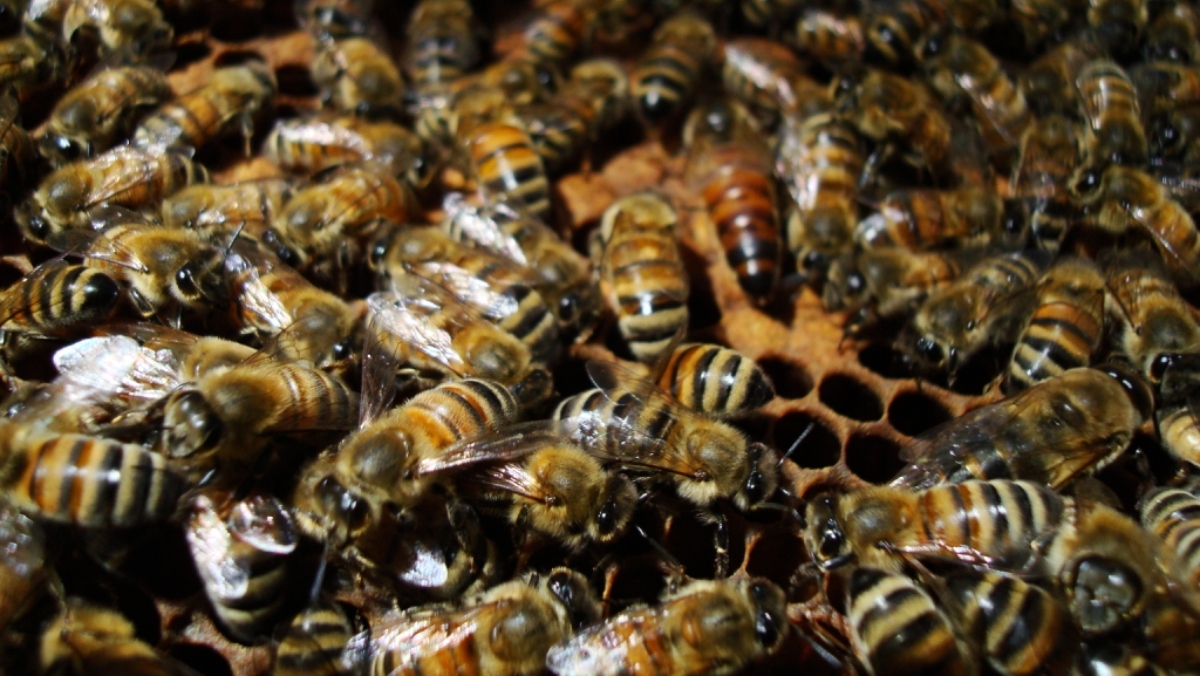Honeybees are fantastic at teamwork. Whether that be working to free delicious honey from a tight spot or swarming somebody’s car because they left the window open. Or, in the case of Canary Black Bees on the Canary Islands, protecting their hives from a massive blanket of volcanic ash. For a full 50 days. And with a fantastic survival rate to boot.
Gizmodo reported on the miraculous honeybee triumph, which first came to light—literally and figuratively—in early November of this year. The New York Times outlined the instance of “life finding a way” in a more recent piece; highlighting just how incredible this story of survival was.
This is the moment that thousands of bees 🐝 that survived the #LaPalma eruption🌋,buried in thick ash for 50 days, were found alive.
— AaravSeth🇮🇳 (@AaravSeth_) November 30, 2021
600 metres from the #volcano,& surviving by sealing their hives with bee glue called propolis.
@MarineGOfficial @ImandiUpic.twitter.com/J9SegW20hR
As Gizmodo notes, the Canary Black Bees— a type of honeybee with a characteristically dark appearance—survived an ash onslaught from the Cumbre Vieja volcano. The Canary Islands volcano erupted for the first time in 50 years in mid-September. It destroyed local infrastructure with fast-moving fingers of lava and toxic gases.
The Canary Black Bees, which were approximately 2,000 feet from the volcano’s erupting cone, were able to protect six hives a beekeeper had placed in the area. Tens of thousands of bees survived in total, from all hives except for one of them. Although Spanish news agency, Agencia EFE, notes that the one hive that saw its bees die may have already been “weak” before the volcano’s eruption.
The honeybees managed to survive for a few—lucky—reasons. The bees’ keeper told Agencia EFE that he had not yet removed the summer honey harvest. This allowed the hives to have “food reserves” while the blanket of ash covered them. The ash that fell on the hives was also particularly porous. (Consisting primarily of lapilli, or rock fragments, volcanoes eject as they spew.) This porousness allowed air to pass into the hives through the ash.

Agencia EFE reports that the beekeeper also had hives much closer to the volcano’s cone. Like the ones that did survive, those hives used propolis—a resinous mixture that honey bees produce by mixing saliva and beeswax with saps gathered from botanicals—to protect their hives by sealing them off from volcanic gases and ash. A tactic that worked at first. But ultimately failed when lava buried the hives.
The bees are “resentful, but alive,” the president of the Sanitary Defense Association of La Palma told EFE. (Which kind of sounds like us every Monday morning. And Sunday night after 9 PM.) At the top is a video of the hives and their ashy tombs. The vibe is celebratory, of course. But also kind of feels like the beginning of an Attack of the Volcano Bees! horror flick.